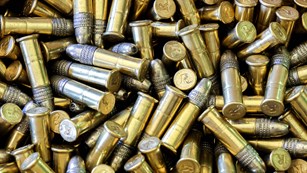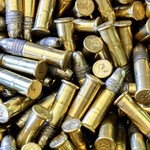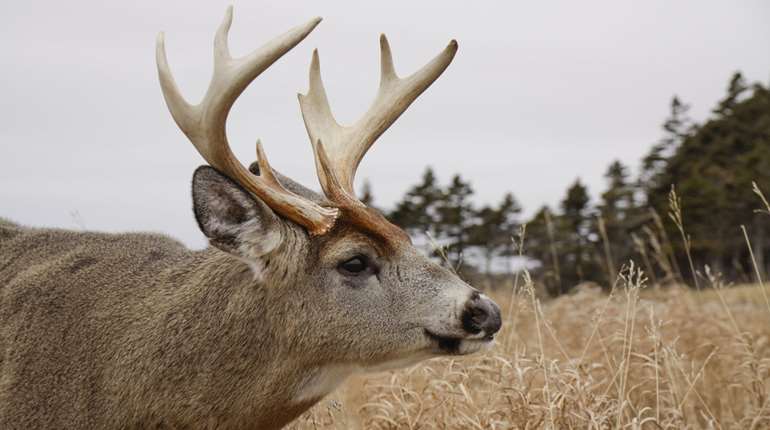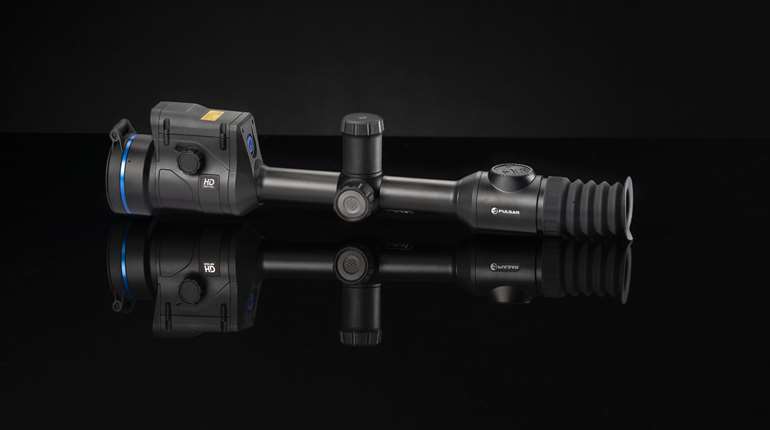
1. Every Buck Has a Shot
For those who were never the Big Stud of their high school crowd, listen to this. It seems that even in whitetails, “Junior” can do a little breeding. A study detailed in the Journal of Mammalogy conducted in Texas, Oklahoma and Mississippi, used DNA sampling rather than empirical observations of deer herds to determine genetic paternity. And, when it comes to mating patterns, the study found that among whitetails, every buck has a shot at contributing to the next generation. This study found that physically immature males 1½- to 2½-years of age fathered 30 to 33 percent of offspring in the populations examined—even where larger, mature males were present. The study sampled 1,219 deer from those three scattered populations. Total DNA was taken from either blood or ear-tissue samples, but antler material was also gathered and processed.
Three "captive populations" were studied from the Noxubee National Wildlife Refuge in Mississippi, the King Ranch in Texas and the Noble Foundation Wildlife Unit in Oklahoma. Researchers say they provided different demographic makeups due to long-term differences in harvest and herd management. One location allowed public hunting, while another was more restrictive, using herd thinning as a management technique. Those differences made for a more diverse demographic, which made it easier to evaluate adult sex ration and male age structure on reproductive success.
2. Late-Season Velvet
Every now and then bucks are seen with their antlers still in velvet during the late season. These bucks are called “cryptorchids”. This phenomenon usually occurs after some sort of injury to the testicles, or in some cases when the testicles may not extend down into the scrotum. The result is a reduction in testosterone production, and thus the normal antler growth cycle, which includes the antlers hardening and the shedding of velvet, is drastically changed. Cryptorchid bucks act differently from other bucks in that they don’t participate in normal buck activities like rubbing or scraping, as they lack the chemical stimulation necessary to express dominance. They will not participate in the breeding cycle. Also, the antlers, goofy as they are, continue to grow as the animal matures. Old bucks of this type often turn into what we call a “cactus” buck with a host of abnormal points.
3. Do Whitetails Sleep?
While there has been very little research done on sleeping whitetails, the prevailing wisdom says that deer sleep with their heads in a variety of positions and with their eyes both opened and closed. Deer sleep anywhere they bed. Their head position changes many times during a sleep session, and they may lay with their front and back legs tucked under them, their back legs tucked and front legs extended and even on their side with all of their legs extended.
A typical sleeping session includes 30 seconds to a few minutes of dozing, followed by a brief alert period and then more dozing followed by an alert period. This cycle often lasts for about 30 minutes. Generally, once every 30 minutes or so deer will stand and stretch and they may urinate or defecate before laying back down. Also, deer spend the majority of their time bedded. The exact amount varies seasonally as deer spend less time bedded during the rut and more time bedded during winter, at least in northern environments. While bedded they chew their cud to regurgitate, re-chew and digest their food. They also groom themselves and doze or sleep. They may chew their cud with their eyes closed, and grooming consists of licking and cleaning themselves, including their interdigital glands.
Can you sneak up on a sleeping deer? It is highly unlikely given the fact that whether dozing or sleeping with eyes open or closed, deer are continually monitoring what is going on around them. Their ears are never lowered, and they can wake up instantly. The best time to try it is on days with strong winds and/or driving rain, which can help mask your own sound and scent.
4. Deer Vocalizations
Did you know that research has shown that whitetails actually make up to 400 different vocalizations? Most of the vocalizations they make are so soft only skilled observers can recognize them. In fact they are sometimes mistaken for insects buzzing and other background noises.
Hunters are most familiar with certain groups of calls. These include Alarm calls, of which the snort is the most commonly recognized (it can be heard up to a quarter mile away under the right conditions.) The bawl is a call used when deer of all ages are being traumatized. Generally speaking, when deer hear both these sounds they flee. Mother-Fawn calls consist of several sounds, including a maternal grunt, bleat, mew, nursing grunt and a contact call used when deer become separated from each other and are trying to find out where other deer are. This is a moderately pitched grunt and can be used by hunters to draw deer to them, especially young bucks. Finally, there are mating calls. These include many sounds most experienced hunters are familiar with, including the tending grunt, flehmen sniff and bellow. Of these, the tending grunt—of moderate volume and often longer duration than a contact grunt—can be used by hunters to bring in bucks during the rut that are trolling for individual does.
5. Antlers are Amazing!
Hunters have been fascinated by antlers since they lived in caves. Did you know that:
Deer antlers can grow an inch or more per day, making them the fastest normal growing tissue known to man—only tumors and embryos grow new tissue at this rate. The antler growth cycle is driven by photoperiod (day length) and hormones. In photoperiod-controlled experiments, deer can grow up to three sets of antlers per year or retain their antlers for more than one year.
The pedicle area of the skull contains unique material which enables antler growth. Damage to the pedicle results in abnormal antler growth.
The annual growth and shedding of antlers is regulated by annual cycles in testosterone levels, and any interruption can potentially impact the antler cycle. For example, if the production of testosterone in an adult buck in velvet is interrupted, his antlers will continue to grow, but they’ll never harden. If the interruption occurs when the buck has hard antlers, he will shed them, and he’ll grow new antlers the following spring that will never harden.
When antlers are growing, the mineral requirements to fuel this growth exceed those for skeletal growth and maintenance. Diet provides the greatest amount of calcium and phosphorus for antler growth and mineralization, but the remainder is supplied by “resorption”—stealing minerals from the skeleton and transferring them to the antlers.
6. Which Doe Do I Shoot?
Deer hunters are embracing antlerless deer harvests as part of their own management programs. Often they ask, “Which doe do I shoot?” Here are some facts: First, the largest doe is not necessarily the oldest. Many times a 3½-year old doe will win the “heaviest doe” contest in which does are entered ranging in age from 1½- to 6½-years of age. With experience, hunters can tell live antlerless deer by sex (as opposed to a button buck) and separate females into fawn, yearling and 2½ years of age or older. It is extremely difficult to accurately age live adult females to a specific year, though. For example, while you can estimate a doe to be 2½-plus years old based on body characteristics, it is difficult to identify whether she is actually 2½, 3½, 4½ or older. Fortunately, the oldest females aren’t necessarily the largest so when hunters select for the largest doe(s) they are automatically selecting across a range of ages. Harvesting deer from all age classes is good for the deer herd and it provides important data to use for establishing future antlerless harvest quotas.




































